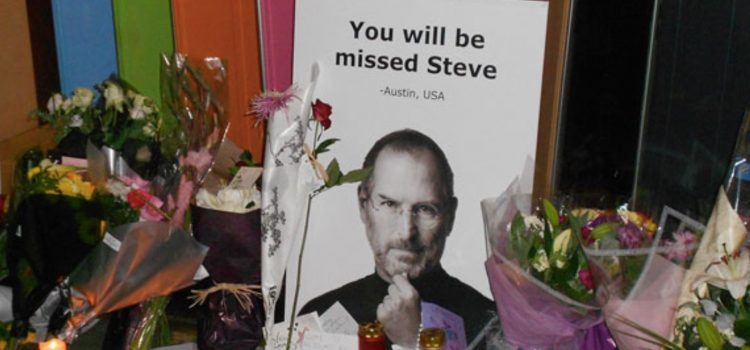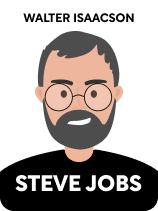

This article is an excerpt from the Shortform book guide to "Steve Jobs" by Walter Isaacson. Shortform has the world's best summaries and analyses of books you should be reading.
Like this article? Sign up for a free trial here.
What is Steve Jobs’s legacy? What type of impact did he make on the technology community?
Steve Jobs’s innovation changed the technology game for the better. Even after he died, his legacy still lives on with new inventions from Apple every year.
Continue reading to learn how Steve Jobs worked to honor his legacy.
Steve Jobs’s Legacy
Steven Paul Jobs was a man of contradictions. He was an idealist, a leader, and a visionary pioneer who earned fame and admiration for his many innovations. At the same time, he was often needlessly cruel—a demanding bully with a black-and-white worldview who insisted that everyone and everything live up to his high expectations.
In his biography of Jobs, Walter Isaacson argues that Jobs’s positive and negative aspects were inextricably linked, and all contributed to shaping a man who was adored and reviled, perhaps in equal measure. To make his case, Isaacson explores four themes that define Steve Jobs’s legacy—his knack for innovation, his black-and-white thinking, his dictatorial leadership style, and his emphasis on product over profit.
1. Radical Innovation
Isaacson claims that what set Jobs apart as a technological pioneer wasn’t any skill as an engineer or programmer but his ability to imagine the future before it arrived. His mindset was fostered by the anarchistic counterculture of the 1960s and ’70s, in which rules and norms were routinely circumvented. Jobs embraced the counterculture’s emphasis on spiritual growth, which led to his belief that intuition is more powerful than intellect. His confidence in the strength of his own intuition let him see possibilities that others would miss.
(Shortform note: Jobs was not alone among radical thinkers in valuing the power of intuition. Albert Einstein had much to say on the subject, including his famous quote, “Imagination is more important than knowledge.” In Blink, Malcolm Gladwell describes how “snap judgments” can be made more effective, and he argues that intuitive decision-making can often be more powerful than a drawn-out, conscious thought process.)
Instead of resting on the iPod’s success, Isaacson shows that Jobs was still looking to the future, particularly toward the cell phone market. Cell phones already had built-in cameras, and he knew that as soon as they incorporated music players they would kill the market for the iPod. Therefore, Jobs chose to get there first with the iPhone. Coupled with the iPad tablet, which came out shortly after, Jobs helped steer the digital age away from PCs as the primary computing devices of choice.
But Jobs didn’t see these as separate devices. According to Isaacson, Jobs envisioned an information landscape in which a desktop computer would serve as a “hub” for all of a user’s devices. This allowed for seamless integration from one device to another—an album or ebook bought on your iMac would instantly transfer to your tablet or phone. Toward the end of his life, Jobs believed that the hub for a person’s devices would no longer be their PC at all, but would move into the cloud.
While it can’t be said that Jobs created these trends, Isaacson illustrates Jobs’s uncanny ability to intuit future shifts in computing and position his company ahead of its competitors.
2. A Black-and-White View
Despite the brilliance of Jobs’s leaps of insight, his belief in the power of his own intuition let him fall into the trap of binary “either/or” thinking. Isaacson argues that this temperament colored not only Jobs’s vision of the future but the way he treated the people around him. In Jobs’s eyes, every person he met was either a genius or an idiot. Every idea was either brilliant or rubbish. Every product was either the best or it was garbage.
Jobs was vocal about his opinions and would use them to build people up or tear them down, sometimes on the very same day. This type of behavior was particularly manipulative—Jobs would berate a hapless colleague, then later put them on a pedestal. This made people eager to please him and terrified of failing to do so.
3. A Tyrannical Taskmaster
Jobs was driven by a singularity of vision when it came to anything he had a hand in designing. Once he knew what it was he wanted, whether it was a photo for an ad campaign, the layout for an Apple Store, or a particular shade of blue for a computer, he wouldn’t stop until he’d got it just right.
The intensity of Jobs’s creative vision, coupled with his lifelong desire for perfection, caused him to lead others with a very heavy hand, inadvertently creating many of the pitfalls that plagued his first tenure at Apple and at NeXT. Isaacson says that Jobs’s laser focus on minute details would often result in delays, cost increases, total redesigns, and overworked employees. Taken to extremes, his perfectionism led to ridiculous demands, such as that the NeXT computer be a perfect cube, regardless of its engineering needs.
Isaacson points out that Jobs’s need for control is what defined Apple’s stance in the debate between open and closed computer systems, which led to Microsoft’s greater market share. This same conflict resurfaced in the 2000s when Google released its open Android system to compete against the iPhone’s closed OS.
While Jobs’s vision often led him to act as a dictator, his colleagues learned that they could challenge him if they had better ideas than his. (In fact, the team that designed the Macintosh instituted an annual award for the employee who pushed back against Jobs the best.) Many of the people who worked with Jobs grew into tougher, more visionary people themselves.
Despite Jobs’s often tyrannical behavior, he had a skill for fostering group collaboration. Many companies in the corporate world are fractured, split into divisions that compete against each other. Jobs would not let that happen, either at Pixar or at Apple. When Jobs designed a new building for Pixar, Isaacson says that he deliberately set it up so that teams working on different film projects weren’t segregated; they’d be forced to interact, even if by accident. At Apple, instead of having engineering, production, and marketing work on their facets of any project separate from each other, Jobs would insist that all divisions work in tandem, allowing for a cross-pollination of ideas.
4. Product Over Profit
While other business leaders were surely easier to work with, Isaacson claims that Jobs’s motivation went beyond the company’s bottom line. The goal that shaped Jobs’s vision for his company wasn’t maximizing profits, but delivering the best product possible. He pursued this by focusing on Apple core essentials of craftsmanship, simplicity, and quality.
For Jobs, “keep it simple” was a way of life. Focusing on priorities and eliminating inessentials defined everything he did, from what he ate to how he furnished his house to how he structured his companies and products. In particular, it was his push toward basic, fundamental principles that, according to Isaacson, halted Apple’s downward spiral once Jobs returned to the company. After his failures with NeXT, Jobs had learned to focus only on those projects that were most essential. That meant directing all of Apple’s resources to no more than two or three projects at a time.
Jobs infused his passion for delivering great products into all of the development teams he brought together. He wanted everything his companies created to be more than useful; they had to be works of art. Isaacson recounts that Jobs directed his teams as if they were artists, whether they were working on operating systems, circuit boards, or apps for phones and tablets. As artists, he told them not to compromise, not to be afraid to break rules if they had to, and not to stop working until their projects were done.

———End of Preview———
Like what you just read? Read the rest of the world's best book summary and analysis of Walter Isaacson's "Steve Jobs" at Shortform.
Here's what you'll find in our full Steve Jobs summary:
- A no-fluff look into the life of Steve Jobs
- How Jobs changed the technology landscape
- What it was like to work with and for Steve Jobs






